Vinyl and linoleum are distinct types of resilient flooring that possess numerous similarities. Due to these resemblances, many individuals often confuse the two terms. However, there are several key differences that set linoleum apart from vinyl. By examining all their features, you can decide which resilient flooring option is most suitable for your needs.
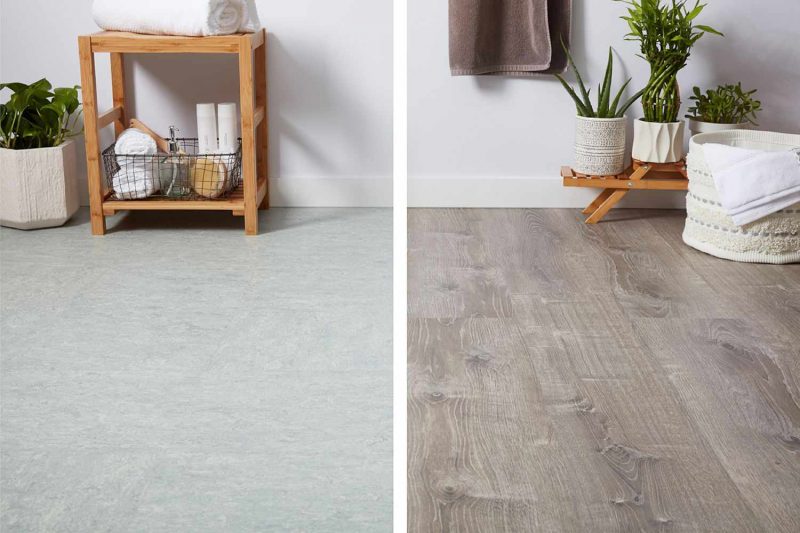
Contents
Linoleum and Vinyl Flooring: Key Distinctions
Linoleum is the pioneering resilient flooring option. Patented over 160 years ago, its discovery came about when linseed oil, used as a paint thinner, formed a solid, durable, yet flexible film on the paint’s surface. Further experimentation revealed that this substance could be combined with various materials, resulting in a highly durable and versatile building product—perfect for flooring. Modern linoleum primarily consists of linseed oil, a natural substance derived from flax seeds. This oil is combined with other renewable materials, such as cork dust, wood flour, and pine rosin, and then pressed into sheets for flooring applications. One of the main distinctions between linoleum and vinyl flooring is that linoleum is entirely made from natural materials.
Between the late 19th century and the 1950s, linoleum emerged as the preferred flooring option for kitchens and various utility spaces. This flooring is composed entirely of solid material, lacking a printed design layer, which contributes to its distinctive durability and wear properties.
Vinyl emerged in the 1920s as a fully synthetic substance primarily made from PVC (polyvinyl chloride). It gained popularity in the 1960s as a more affordable alternative to linoleum flooring. Vinyl flooring typically features a PVC core supported by a felt or fiberglass backing, topped with a durable wear layer that safeguards a printed design layer.
Vinyl production involves a range of hazardous chemicals, leading to significant worries among eco-aware consumers today. Besides PVC, vinyl contains several phthalate plasticizers to enhance its flexibility. Many of the substances utilized in its production are known carcinogens. Moreover, the manufacturing process consumes substantial amounts of petroleum and energy. Disposing of old vinyl flooring in a safe manner is nearly impossible.
These environmental factors have led eco-conscious shoppers to revisit linoleum as a more sustainable option compared to vinyl flooring. Once seen as outdated, linoleum has now regained its appeal, becoming stylish and contemporary once more.
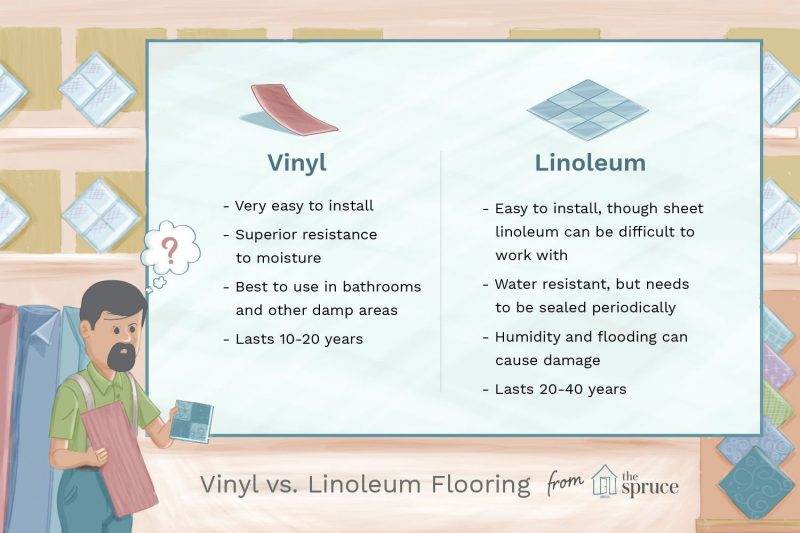
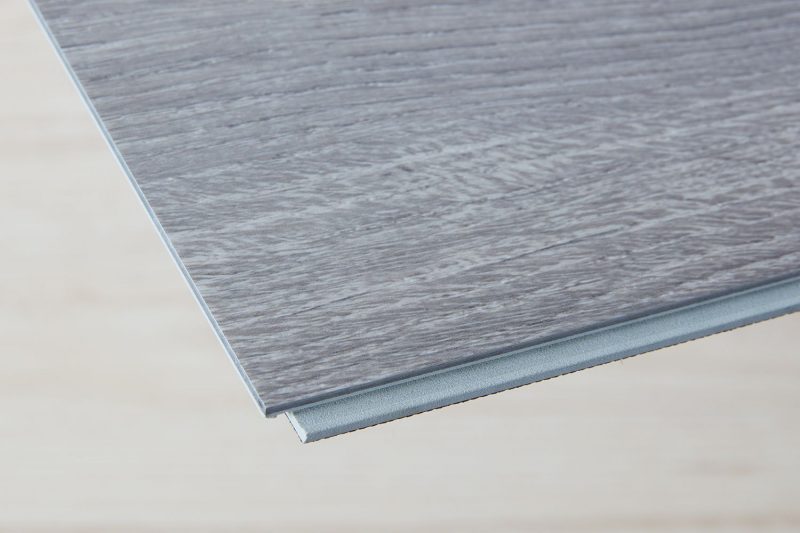
Vinyl Flooring
In contrast, linoleum is a durable, color-stable substance where the color and design are integrated throughout the entire thickness, rather than merely being applied to the surface. While this may restrict the variety of design choices to a certain extent, it also ensures that the flooring can endure the passage of time without displaying noticeable signs of wear for many years. Vintage linoleum retains the same color and design as it did upon installation.
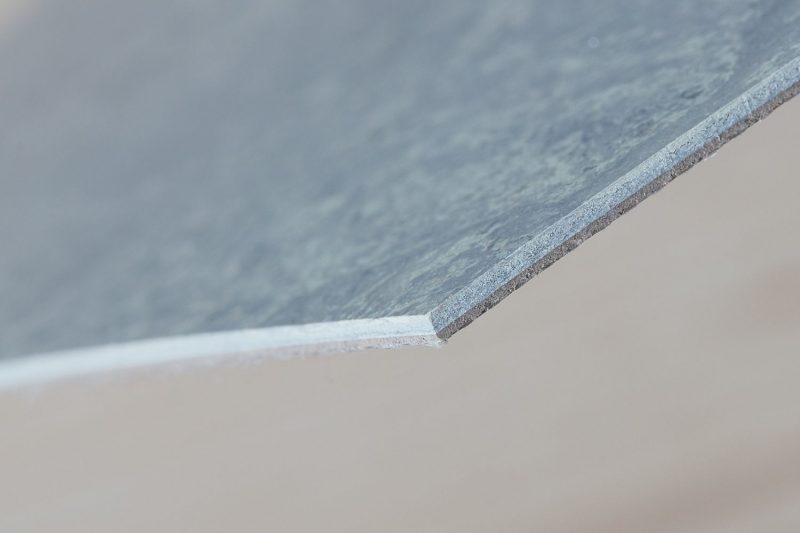
Ideal for Aesthetic Appeal: Vinyl
Vinyl flooring provides a greater range of design options compared to linoleum.
Resistance to Water and Heat
Vinyl Flooring Solutions
Contemporary vinyl flooring is nearly impervious to water, making it suitable for installation in areas prone to moisture, such as basements and other subterranean spaces. In contrast, older vinyl varieties feature a felt backing that is vulnerable to water damage. In contrast, modern vinyl employs fiberglass backing, which is resistant to water and damage. Additionally, sheet vinyl offers greater water resistance compared to vinyl tiles, as it has fewer seams that could permit water to seep through to the underlying layer.
Vinyl Flooring
While linoleum is resistant to water, it is not completely immune to moisture-related damage and requires regular sealing to safeguard against liquid infiltration. In the event of flooding, linoleum flooring can be severely compromised, and high humidity levels may lead to the curling of individual tiles or the edges of sheets.
Among the two materials, linoleum demonstrates superior heat resistance. Unlike vinyl flooring, linoleum is less likely to melt when exposed to hot skillets or curling irons. Additionally, in the event of a house fire, linoleum is less prone to catch fire and release harmful fumes, a risk associated with vinyl.
Ideal Choice for Water and Heat Resistance: Vinyl Flooring
Vinyl flooring offers greater water resistance compared to linoleum, which requires frequent sealing to maintain its integrity. On the other hand, linoleum tends to have a higher resistance to heat-related damage.
Maintenance and Cleaning
Vinyl Flooring Solutions
Vinyl flooring is among the simplest types to maintain. Regular sweeping and vacuuming, along with mopping using various cleaning solutions, can be done without the concern of the material fading. Its resistance to moisture, mold, and mildew allows for easy cleaning, ensuring it remains in excellent condition.
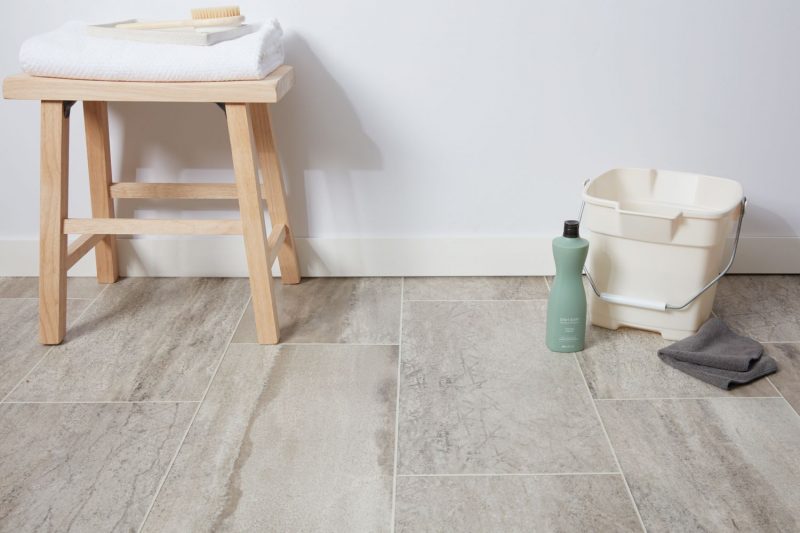
Vinyl Flooring
Linoleum is almost as low-maintenance as vinyl, making it a popular choice for schools, hospitals, and various public spaces for many years. Regular sweeping or vacuuming is sufficient for upkeep. For stain removal, a simple cloth and a gentle detergent will do the trick. It’s advisable to use a cleaner specifically designed for linoleum, as standard household detergents may contain high pH levels that could harm the flooring.
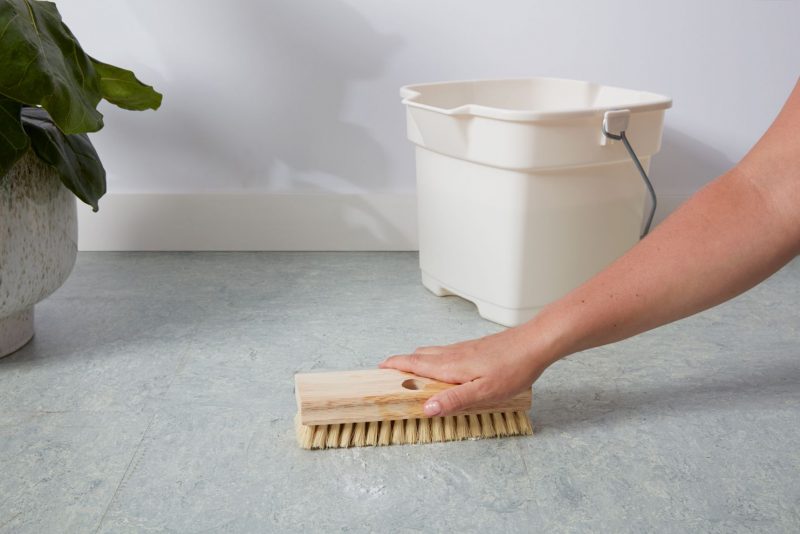
Ideal for Maintenance and Tidying: Tie
Vinyl and linoleum floors are both simple to maintain and clean.
Longevity and Upkeep
Vinyl Flooring Solutions
Vinyl flooring features a design layer that is bonded to a durable PVC base, which means that over time, the design layer could wear away, revealing the solid core beneath. However, contemporary vinyl flooring is equipped with a robust protective wear layer, eliminating the need for waxing or sealing.
Vinyl Flooring
Linoleum is regarded as a more resilient flooring option due to its solid construction that extends throughout its thickness. While both flooring types are relatively low-maintenance, linoleum necessitates occasional sealing to maintain its resistance to moisture and stains, unlike vinyl flooring. Additionally, linoleum is a bit softer than vinyl, making it more susceptible to scratches and gouges. However, minor damages are less noticeable, as there is no underlying core layer that would be exposed.
Optimal Choice for Longevity and Upkeep: Tie
Linoleum offers greater durability, while vinyl is simpler to care for, as it does not need to be sealed.
Tip
Vinyl flooring offers a robust solution for households with pets, as it is better equipped to withstand scratches from their claws and is less susceptible to moisture and stains from accidents.
Installation
Linoleum and vinyl flooring necessitate a perfectly smooth and level underlayment because these thin and flexible materials can easily reflect any imperfections from the underlayment onto the surface.
Vinyl Flooring Solutions
Sheet vinyl flooring typically requires a complete glue-down installation, which can be a bit challenging for those attempting a DIY project. Achieving a precise fit when cutting large sheets can be tricky, and aligning seams between different pieces can also pose difficulties. Since hiring a professional for installation is relatively affordable, many individuals choose this route. In contrast, vinyl tiles are much simpler to install, which is why they are popular among DIY enthusiasts.
Vinyl tiles can be affixed using a complete glue-down methodhowever, the majority of vinyl tiles currently available at home improvement stores feature a peel-and-stick design. In this case, the adhesive is pre-applied to the tiles, allowing you to simply remove the protective backing when you are ready to install them.
Vinyl Flooring
Installing linoleum shares many similarities with vinyl installation. However, sheet linoleum can be more challenging to handle compared to sheet vinyl, often requiring professional installation. Cutting the sheets can be more difficult, but a sharp linoleum knife typically does the job. The installation involves a glue-down method, with seams welded together. Linoleum is also available in tile and plank formats, which are more suitable for DIY projects. These options often utilize a click-lock system, enabling the tiles or planks to float over the subfloor without the need for adhesives, similar to the installation process for luxury vinyl or laminate planks.
Ideal Choice for Installation: Vinyl Flooring
Vinyl flooring is a more flexible and softer type of flooring, which simplifies the installation process.
Cost
Vinyl Flooring Solutions
Vinyl sheet flooring bought from large home improvement retailers generally ranges from $0.50 to $2 per square foot, whereas tiles average around $3.50 per square foot. Designer options available at specialized flooring shops can come at significantly higher prices.
Vinyl Flooring
Linoleum flooring tends to be on the pricier side, with sheet options typically ranging from $5 to $7 per square foot, while tile varieties usually fall between $3 and $5 per square foot. Designer styles may incur even higher prices.
Most Affordable Option: Vinyl Flooring
Vinyl flooring tends to be more affordable compared to linoleum. When considering either option, you should anticipate an additional cost of approximately $4 to $7 per square foot for professional installation.
Lifespan
Vinyl Flooring Solutions
The price disparity between vinyl and linoleum is somewhat balanced by their differing lifespans. Although vinyl is cheaper than linoleum, its durability ranges from 10 to 20 years. However, vinyl flooring retains its shiny look until the surface layers wear down, revealing the underlying material.
Vinyl Flooring
A linoleum floor has a lifespan of 20 to 40 years or even longer. However, as time passes, linoleum will begin to deteriorate, gradually appearing more worn and aged, eventually necessitating a replacement. While some individuals appreciate the character that comes with an aged linoleum floor, others may find it unappealing.
Ideal for Longevity: Linoleum Flooring
When it comes to durability over time, linoleum outperforms vinyl flooring significantly.
Sizes
Vinyl Flooring Solutions
Vinyl sheet flooring usually comes in rolls measuring either 6 or 12 feet, allowing for lengths to be cut as required. Tiles are offered in square sizes ranging from 9 to 18 inches.
Vinyl Flooring
Linoleum sheets can be found in rolls measuring either 6 or 12 feet. On the other hand, linoleum planks generally resemble luxury vinyl planks in dimensions, ranging from 48 to 60 inches in length and 4 to 8 inches in width.
Optimal for Dimensions: Tie
Neither type of flooring offers a benefit in terms of dimensions.
Resale Worth
Vinyl Flooring Solutions
Vinyl flooring is often viewed as a budget-friendly flooring option, typically contributing minimal to no increase in a property’s value.
Vinyl Flooring
Many potential homebuyers might struggle to distinguish between vinyl and linoleum flooring at first glance. While linoleum might be perceived as less appealing in terms of design due to its limited range of colors and patterns compared to vinyl, its eco-friendly attributes could be highlighted as a positive feature, particularly for environmentally conscious buyers.
Optimal for Resale Worth: Tie
Both types of materials are considered budget-friendly flooring options, and typically, neither provides a notable benefit in terms of resale value compared to alternatives like hardwood flooring.
Comfort and Audio Quality
Vinyl Flooring Solutions
While vinyl flooring is durable enough to withstand drops without breaking some items, it tends to feel quite cold and hard underfoot, particularly when laid over a concrete base. Additionally, vinyl is somewhat quieter compared to harder surfaces such as ceramic tiles or laminate.
Vinyl Flooring
Linoleum is a somewhat softer substance that can provide greater cushioning when walked on.
Ideal for Comfort and Acoustics: Linoleum
Being a somewhat more pliable material, linoleum flooring offers a bit more comfort and reduced noise when walked on compared to vinyl flooring.
Ecological Factors
Vinyl Flooring Solutions
Vinyl is one of the most toxic building materials available globally. Although the harmful and carcinogenic substances used in its production remain stable in the form of sheets or tiles, they are emitted when the material is incinerated. Additionally, there is no recycling option for vinyl flooring when it is replaced. Consequently, these materials can persist in landfills for hundreds of years, and incineration is not a viable disposal method.
Vinyl Flooring
A significant distinction that greatly impacts certain homeowners is the eco-friendly aspect of linoleum. Unlike vinyl, linoleum is made primarily from linseed oil, derived from plants, and is combined with other natural substances. Instead of needing replacement in as few as 10 years, linoleum flooring can last up to 40 years. When the time comes to dispose of it, the materials decompose safely in the environment.
Ideal Choice for Eco-Friendly Options: Linoleum Flooring
In this case, linoleum flooring clearly takes the top spot, as it is composed entirely of natural materials, unlike vinyl flooring, which is produced using harmful chemicals.
The Ruling
Vinyl and linoleum are both cost-effective flooring options that offer easy maintenance and water resistance. Vinyl stands out for its wide range of designs and affordability, whereas linoleum is more durable and is made from natural, less harmful materials.
Leading Brands
Many prominent brands that produce vinyl flooring also provide linoleum options. Additionally, there are companies that focus exclusively on linoleum flooring.
- Armstrong provides a vast array of vinyl and various flooring options, and among their offerings is the LinoArt collection of linoleum flooring. This line features a wide variety of colors and patterns, such as solid colors, marble effects, linear designs, and flecked styles. It is offered in both glue-down sheets and tiles.
- Tarkett’s linoleum division, known as Johnsonite, provides a diverse selection of flooring options, featuring more than 20 distinct collections of linoleum.
- Forbo (Marmoleum) is a highly recognized name in the linoleum flooring market, offering an extensive selection of over 300 colors and designs. Their products are designed for easy installation, featuring a user-friendly click-lock system for both planks and tiles.
Which type of flooring is more favored, vinyl or linoleum?
Vinyl flooring has gained greater popularity compared to linoleum. This is largely due to its resilience, ease of maintenance, cost-effectiveness, and the wide range of styles it offers.
Which is simpler to install on your own: vinyl or linoleum?
Vinyl is simpler to install, which is why it is popular among DIY enthusiasts. Its flexibility and softness compared to linoleum make it more manageable to handle.
Are vinyl and linoleum resistant to water?
Vinyl is impervious to water, whereas linoleum is only resistant to it. To safeguard linoleum against moisture and water-related issues, it requires periodic sealing, unlike vinyl, which does not need this treatment.

